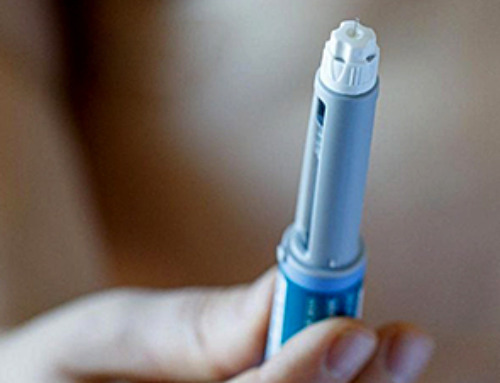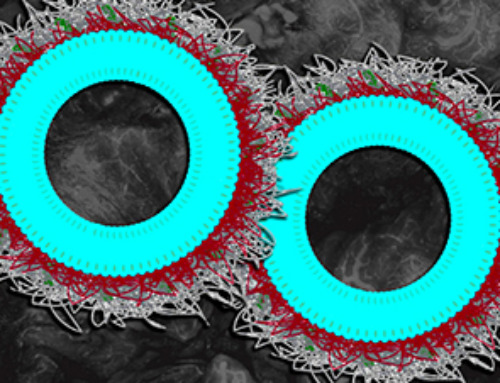A pea-sized device used to seal tiny but potentially deadly holes in the hearts of premature infants has been approved by U.S. regulators, making it one of the smallest complex medical devices ever invented and cleared for sale.
Abbott Laboratories’ Amplatzer Piccolo Occluder is one of the first treatments to become available for a common congenital defect that can become dangerous for premature infants. The device can be used in babies weighing as little as two pounds in cases where a hole in the heart used to deliver oxygen-rich blood in the womb doesn’t close after birth.
The Piccolo is threaded into the heart using a catheter that runs through the femoral vein in the thigh. That avoids a taxing surgery for the undersized patients, who are often on ventilators, said Evan Zahn, director of the congenital heart program at Cedars-Sinai Smidt Heart Institute in Los Angeles.
“We’ve never had anything like this, a device from a major medical manufacturer that was specifically designed with these tiny, really at risk, very fragile babies in mind,” said Zahn, the lead investigator of the study that led to the device’s approval by the U.S. Food and Drug Administration Monday. “We’re talking about babies the size of the typical water bottle we all drink out of. They are incredibly frail, fragile and at risk for terrible morbidity and mortality.”
The Piccolo is not expected to be a major sales driver for the Abbott Park, Illinois-based company. Instead, it represents a significant technological advance as medical-device manufacturers work to make their products ever smaller and easier to place in the body without taxing surgeries.
Everyone is born with a small hole in their heart, a condition called patent ductus arteriosus. In the womb, the hole allows a fetus’s blood to bypass the lungs and get oxygenated blood directly from the mother.
Usually, the hole closes a few days after delivery. In some premature newborns, however, it never does, making breathing difficult and leading to a host of potential complications. They include developmental delays, damage to the brain and bowel because they aren’t receiving the blood they need and injuries to the lungs that are flooded with fluid.
For years doctors performed open-heart surgery to close the hole, a procedure now thought to do more harm than good to the smallest patients, Zahn said. Other treatments include medicine to ease the symptoms and encourage closure, though in most cases doctors, patients and families simply wait and hope the hole eventually seals.
“We know it’s there and we know it’s bad, but we have to bite the bullet and hope the kids pull through,” Zahn said of existing medical practice.
The company hasn’t yet announced a price for the Piccolo.
News This Week
Concerning New Research Reveals Colon Cancer Is Skyrocketing in Adults Under 50
Colorectal cancer is striking younger adults at alarming rates, driven by lifestyle and genetic factors. Colorectal cancer (CRC) develops when abnormal cells grow uncontrollably in the colon or rectum, forming tumors that can eventually [...]
Scientists Discover a Natural, Non-Addictive Way To Block Pain That Could Replace Opioids
Scientists have discovered that the body can naturally dull pain through its own localized “benzodiazepine-like” peptides. A groundbreaking study led by a University of Leeds scientist has unveiled new insights into how the body manages pain, [...]
GLP-1 Drugs Like Ozempic Work, but New Research Reveals a Major Catch
Three new Cochrane reviews find evidence that GLP-1 drugs lead to clinically meaningful weight loss, though industry-funded studies raise concerns. Three new reviews from Cochrane have found that GLP-1 medications can lead to significant [...]
How a Palm-Sized Laser Could Change Medicine and Manufacturing
Researchers have developed an innovative and versatile system designed for a new generation of short-pulse lasers. Lasers that produce extremely short bursts of light are known for their remarkable precision, making them indispensable tools [...]
New nanoparticles stimulate the immune system to attack ovarian tumors
Cancer immunotherapy, which uses drugs that stimulate the body’s immune cells to attack tumors, is a promising approach to treating many types of cancer. However, it doesn’t work well for some tumors, including ovarian [...]
New Drug Kills Cancer 20,000x More Effectively With No Detectable Side Effects
By restructuring a common chemotherapy drug, scientists increased its potency by 20,000 times. In a significant step forward for cancer therapy, researchers at Northwestern University have redesigned the molecular structure of a well-known chemotherapy drug, greatly [...]
Lipid nanoparticles discovered that can deliver mRNA directly into heart muscle cells
Cardiovascular disease continues to be the leading cause of death worldwide. But advances in heart-failure therapeutics have stalled, largely due to the difficulty of delivering treatments at the cellular level. Now, a UC Berkeley-led [...]
The basic mechanisms of visual attention emerged over 500 million years ago, study suggests
The brain does not need its sophisticated cortex to interpret the visual world. A new study published in PLOS Biology demonstrates that a much older structure, the superior colliculus, contains the necessary circuitry to perform the [...]
AI Is Overheating. This New Technology Could Be the Fix
Engineers have developed a passive evaporative cooling membrane that dramatically improves heat removal for electronics and data centers Engineers at the University of California San Diego have created an innovative cooling system designed to greatly enhance [...]
New nanomedicine wipes out leukemia in animal study
In a promising advance for cancer treatment, Northwestern University scientists have re-engineered the molecular structure of a common chemotherapy drug, making it dramatically more soluble and effective and less toxic. In the new study, [...]
Mystery Solved: Scientists Find Cause for Unexplained, Deadly Diseases
A study reveals that a protein called RPA is essential for maintaining chromosome stability by stimulating telomerase. New findings from the University of Wisconsin-Madison suggest that problems with a key protein that helps preserve chromosome stability [...]
Nanotech Blocks Infection and Speed Up Chronic Wound Recovery
A new nanotech-based formulation using quercetin and omega-3 fatty acids shows promise in halting bacterial biofilms and boosting skin cell repair. Scientists have developed a nanotechnology-based treatment to fight bacterial biofilms in wound infections. The [...]
Researchers propose five key questions for effective adoption of AI in clinical practice
While Artificial Intelligence (AI) can be a powerful tool that physicians can use to help diagnose their patients and has great potential to improve accuracy, efficiency and patient safety, it has its drawbacks. It [...]
Advancements and clinical translation of intelligent nanodrugs for breast cancer treatment
A comprehensive review in "Biofunct. Mater." meticulously details the most recent advancements and clinical translation of intelligent nanodrugs for breast cancer treatment. This paper presents an exhaustive overview of subtype-specific nanostrategies, the clinical benefits [...]
It’s Not “All in Your Head”: Scientists Develop Revolutionary Blood Test for Chronic Fatigue Syndrome
A 96% accurate blood test for ME/CFS could transform diagnosis and pave the way for future long COVID detection. Researchers from the University of East Anglia and Oxford Biodynamics have created a highly accurate [...]
How Far Can the Body Go? Scientists Find the Ultimate Limit of Human Endurance
Even the most elite endurance athletes can’t outrun biology. A new study finds that humans hit a metabolic ceiling at about 2.5 times their resting energy burn. When ultra-runners take on races that last [...]






















Leave A Comment